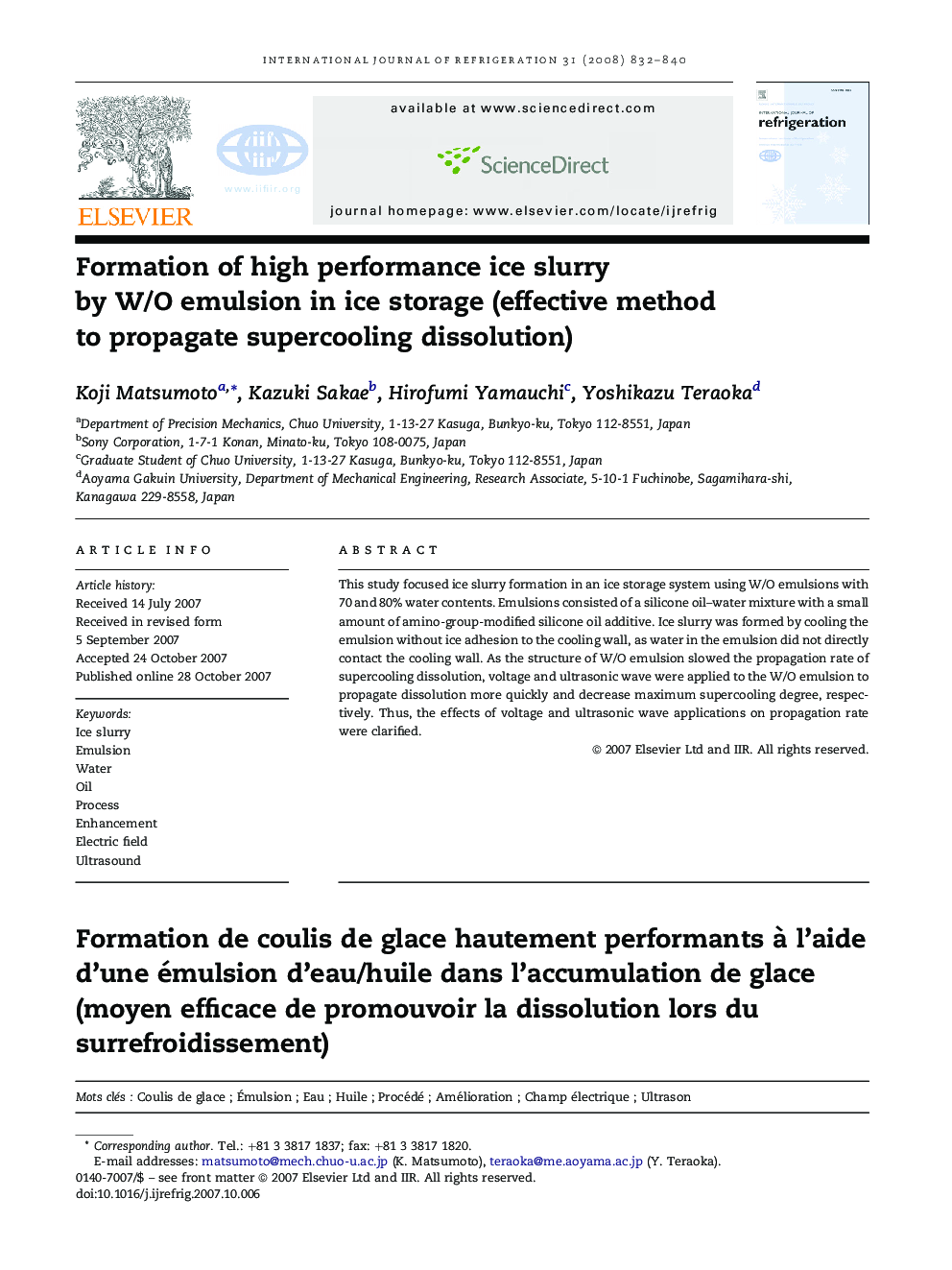| Article ID | Journal | Published Year | Pages | File Type |
|---|---|---|---|---|
| 789950 | International Journal of Refrigeration | 2008 | 9 Pages |
Abstract
This study focused ice slurry formation in an ice storage system using W/O emulsions with 70 and 80% water contents. Emulsions consisted of a silicone oil–water mixture with a small amount of amino-group-modified silicone oil additive. Ice slurry was formed by cooling the emulsion without ice adhesion to the cooling wall, as water in the emulsion did not directly contact the cooling wall. As the structure of W/O emulsion slowed the propagation rate of supercooling dissolution, voltage and ultrasonic wave were applied to the W/O emulsion to propagate dissolution more quickly and decrease maximum supercooling degree, respectively. Thus, the effects of voltage and ultrasonic wave applications on propagation rate were clarified.
Related Topics
Physical Sciences and Engineering
Engineering
Mechanical Engineering
Authors
Koji Matsumoto, Kazuki Sakae, Hirofumi Yamauchi, Yoshikazu Teraoka,
